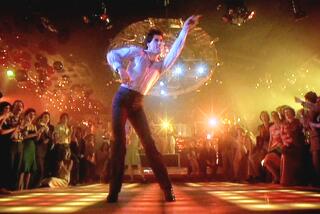Tough Test for Floor of NYSE
- Share via
NEW YORK — As doubts about the future of the New York Stock Exchange trading floor escalated earlier this year, one trader passed around a newspaper article predicting that electronic trading spelled imminent doom for the famed auction-style market.
The article, the trader pointed out to colleagues, was written in 1974.
From the moment that computerized trading emerged in the early 1970s, there have been dire predictions that the NYSE’s old-school ways would soon be history. Colorful traders squaring off on the cacophonous trading floor, they said, would be replaced by the dull drone of mainframe computers.
As the NYSE embarks on a seminal shift -- a planned acquisition of an electronic-trading rival and conversion into a publicly traded company -- the human-touch trading style clearly faces its stiffest challenge in the exchange’s 212-year existence.
“It’s the beginning of the end of the floor,” Junius Peake, a finance professor at the University of Northern Colorado, said Thursday.
Others contend such predictions are greatly exaggerated.
Though the proposed acquisition of Archipelago Holdings Inc. would boost the Big Board’s computerized trading, the deal announced Wednesday also could prolong the life of the floor, some experts say. They argue it could make the exchange financially stronger while giving traders access to the fast-growing options market, as well as Nasdaq-listed stocks.
“It’s way too soon to say this is the death knell of the floor,” said George Rodriguez, a former NYSE staffer who is managing director at Algorithm Trading Solutions, an institutional brokerage.
While automation is all the rage, floor traders play a key role in tamping down wild price swings during market volatility. NYSE “specialists” who make markets in stocks also facilitate the swapping of thinly traded shares by making the other side of a trade if there isn’t a buyer or seller.
Mutual-fund giant Vanguard Group routes more than one-quarter of its $50 billion to $60 billion in yearly trades through electronic markets, and that share is rising, said Gus Sauter, Vanguard’s chief investment officer.
“I’d be a little nervous if I were a market maker for a large-cap stock,” Sauter said. “I’m not sure there’s a great reason for human intervention when you’re trading IBM or General Electric or other highly liquid stocks.”
But “there’s still a value proposition offered by the auction system in the less-liquid stocks,” Sauter said.
In announcing the merger Wednesday, NYSE Chief Executive John Thain pledged to maintain the auction system.
“This is absolutely not the end of the floor,” he declared.
Investors embraced the modernization move, however. Archipelago shares leaped $11.20, or 60%, to $29.96 on the Pacific Stock Exchange, raising the firm’s total market capitalization to $1.41 billion. Because Archipelago would own 30% of the new company, that implies a valuation for the combined entity of $4.7 billion.
An NYSE seat, or membership, sold Thursday for $1.8 million, up $180,000 from the most recent sale a week ago.
By comparison, shares in publicly traded specialist firm LaBranche & Co. fell 12 cents to $7.34 on the NYSE.
The Archipelago deal must be approved by federal regulators as well as the NYSE’s 1,366 seat holders, and won’t close for at least six months.
Though some were apprehensive about how the deal could affect their livelihoods, most traders seemed to support the change during a meeting with Thain on Thursday, according to participants.
Francis P. Maglio of Bridgehampton, N.Y., who ran a Wall Street trading firm for years, listened to the meeting by phone from home with his wife, Theresa, who owns an NYSE seat.
Members had many questions but the meeting was cordial and not marked by much dissent, he said.
“The way we feel is we’d rather have ownership in an entity that has growth in its future than one that might not,” Maglio said.
The well-being of NYSE traders will depend in part on how well they adapt to a new trading dynamic, such as whether they can be a force in trading options or Nasdaq-listed shares, experts said.
James J. Angel, a finance professor at Georgetown University, said he suspected that face-to-face trading would survive on the NYSE for some years but eventually would “go out with a whimper rather than a bang.”
Though 10% of NYSE volume is handled electronically, the exchange must greatly increase automation to remain competitive under new Securities and Exchange Commission rules taking effect next year. (It was amid growing discussion of the effect of those rules that the 1974 newspaper article predicting the trading floor’s extinction began making the rounds at the NYSE.)
By teaming up with Archipelago, the Big Board partners with one of the most successful automated-trading systems -- potentially opening up new business to floor traders, some say.
“They were a fierce competitor,” Dave Humphreville, president of the trade group representing NYSE specialist firms, said of Chicago-based Archipelago. “If we buy them, they’re not going to be a fierce competitor anymore.”
Still, others acknowledged that the repercussions of the deal aren’t yet fully known.
“It’s going to be a whole new world,” said veteran floor broker Kenneth Polcari, adding a moment later with a laugh, “I hope I’m a part of that world.”
More to Read
Inside the business of entertainment
The Wide Shot brings you news, analysis and insights on everything from streaming wars to production — and what it all means for the future.
You may occasionally receive promotional content from the Los Angeles Times.










